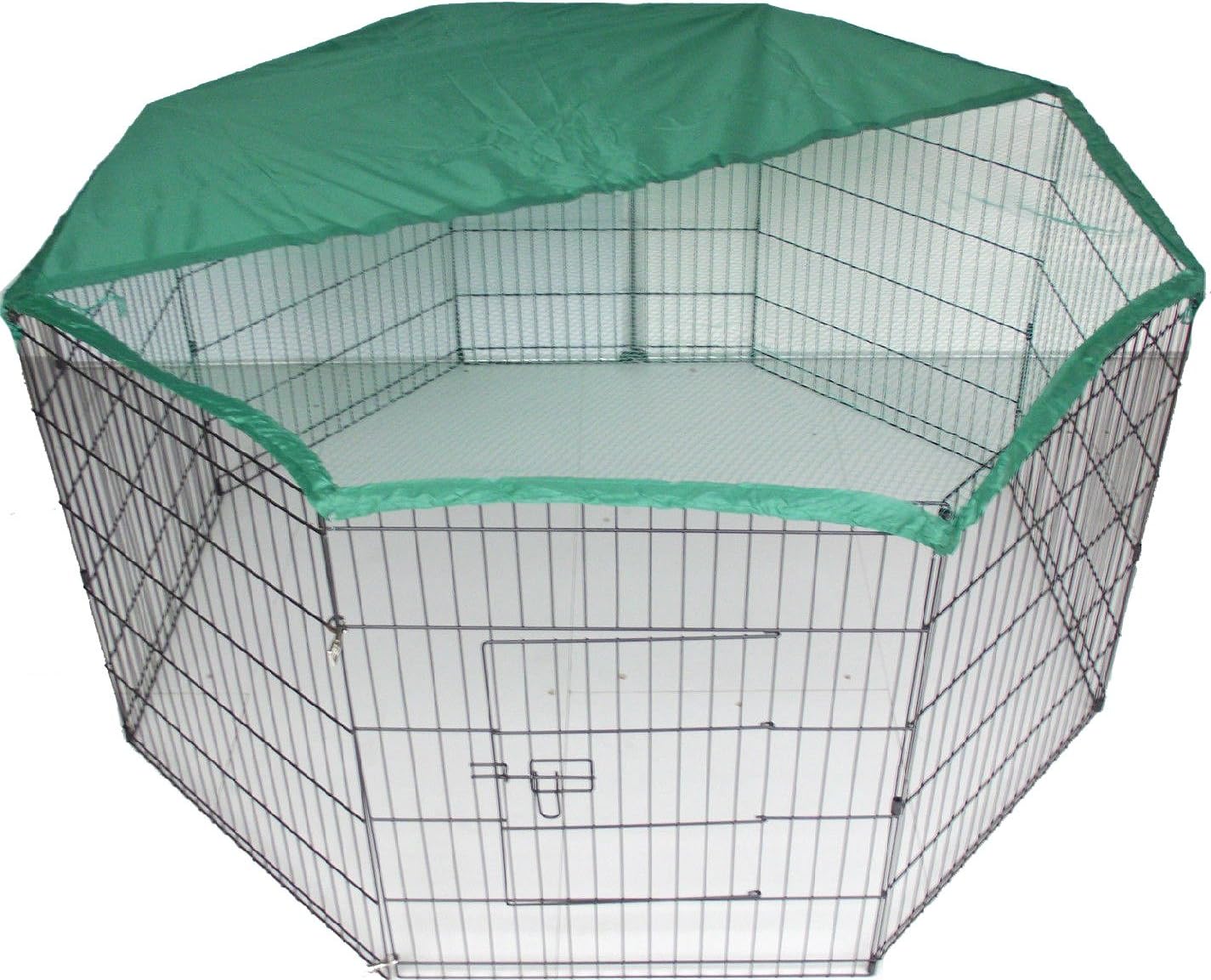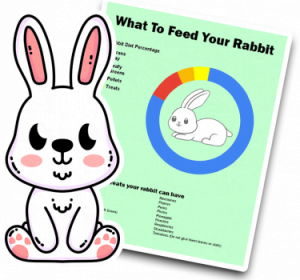
Rabbits are active, playful and need an environment with good space to hop, run and dig.
For Rabbit Enclosures, they need room for stretching out while laying and standing upright on their back legs.
A dry and draught free environment is essential for your rabbit that is securedand well ventilated. Safe hiding places for rabbits are also important and separate toilet and sleeping space.
You can also add fresh bedding to keep your rabbits feeling comfortable and warm.
Their environment also needs to be cleaned on a regular basis to keep your pet happy and healthy.
No, Rabbits don’t need cages but if your rabbit is not trained, then you may need to keep it in a housing like a large cage or exercise pen (x-pen) to protect them while you’re away or asleep and cannot supervise them.

Rabbits sleep during the day time and night time and are usually up and ready to play during the morning and twilight time, this is also known as crepuscular. Make sure that you let them out during evening time or in the morning.
Once your house is rabbit proof and your rabbit is familiar with the house and you also know what they do, they can enjoyin your house even if you’re not home.
The bigger the enclosure the better for your rabbit. A rabbit enclosure should be at least 3-6 times larger than the size of the rabbit itself as the rabbits need space to stretch out and relax.
The size of the enclosure should be decided keeping in mind its exercise time and the space they will have.
rabbit enclosures should be at least 8 sq. ft with at least 24 sq ft. of exercise space for the rabbit which is enough for 1-2 rabbits where they can play for hours every day.
You can also buy a house for your rabbit or build one for them with two-stories that are connected by ramps, your rabbit will love this!
A rabbit should be provided with large spaces as their bodies are designed to run, hop and jump and the lack of exercise can have adverse effects on their health and mind.
It can cause osteoporosis which is the weakening of bones that may lead to leg and spinal injuries. Another problem is obesity, which itself causes other problems like sore hocks and an increased risk of flystrike.
Lack of exercise can also cause heart problems and muscle wastage which can affect the rabbit’s ability to hop around normally.
Theres plenty of different rabbit enclosures that work both outside and inside.
If you’re looking for something outside you should definitely get an enclosure which has a roof to help avoid attacks from predators, otherwise you’ll mostly be looking for size.
To put it simply, DIY rabbit enclosures are the best route and no that does not mean getting your saw and hammer out! You can typically find Pet Playpens which will give you exactly what you need (We’ve grabbed multiple of them now).

We absolutely love it and have simply used it to break up the living room as our rabbit Link has full roam of most of the home.
To accompany this, we have circled his indoor cage which as the doors open to allow him in and out of his sleeping area whenever he needs to.
We, unfortunately, don’t have any photos of this anymore as we had this when we first got our rabbits, but you want to make sure you find an enclosure with a roof on it and a flooring to keep it sturdy.

If you want the full experience, you should a pet cage like a chicken coop as this will give your rabbits a large run size as well as a lot of protection from predators.

This is to help keep further pray out like Foxes and Birds, although you should keep an eye on your rabbit if it’s outdoors as they can die of panic.
Rabbit enclosures should feel like a “nest” where the rabbit feels safe and secure, their home should be their special place. You can make their nest enjoyable and they will enjoy being there.
You can stock your rabbit nest with soft toys, a rug and a piece of wood attached inside their house.
You can treat your rabbit with a fruit snack at bedtime. You can also introduce your rabbits with fun wooden and cardboard play houses where they can have a fun time.
Rabbits have hard feet and so they should not live on wire floors. If you do provide your rabbits with a wire floor cage which isn’t advised, then you must provide them with a rug or resting board where they can sit.
There are wire cages available with plastic floors and solid floors that are more comfortable for your rabbit. You can place a litter box inside for your rabbit that they can use as a bathroom.
Other options like the x-pen provide more space and it’s friendlier for both you and your rabbit
There are many housing possibilities for your rabbit, but the most important thing to consider is the fact that they need a safe space where they can exercise, explore and enjoy at the same time!
Good housing isn’t just about the space to run but it’s about giving them some space for activities and provide your rabbit with physical and mental relaxation!

By entering your email address you agree to receive emails from Cottontailclub. We'll respect your privacy and you can unsubscribe at any time.